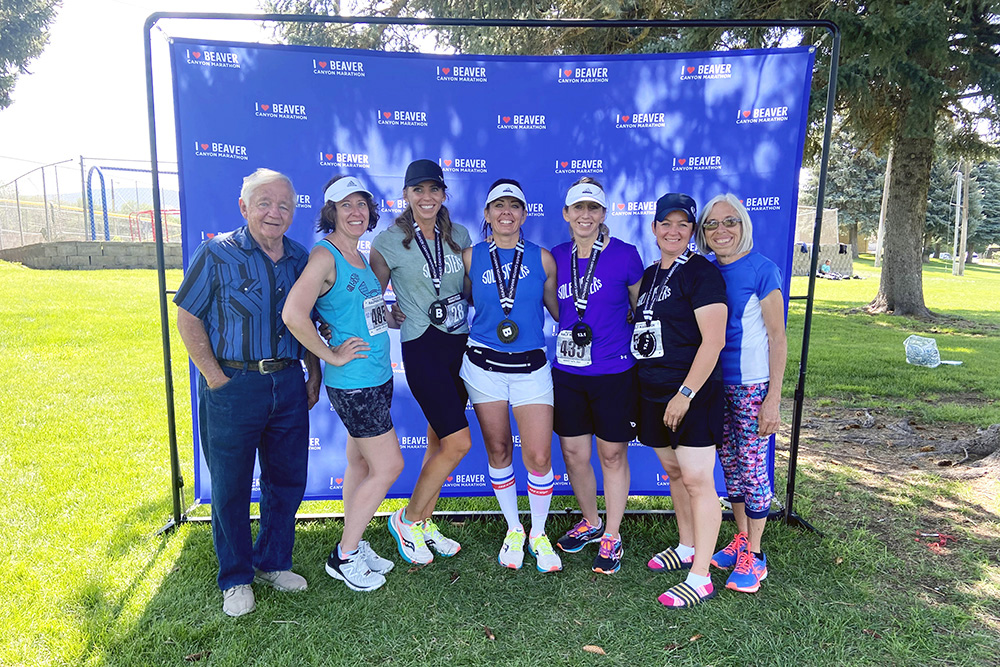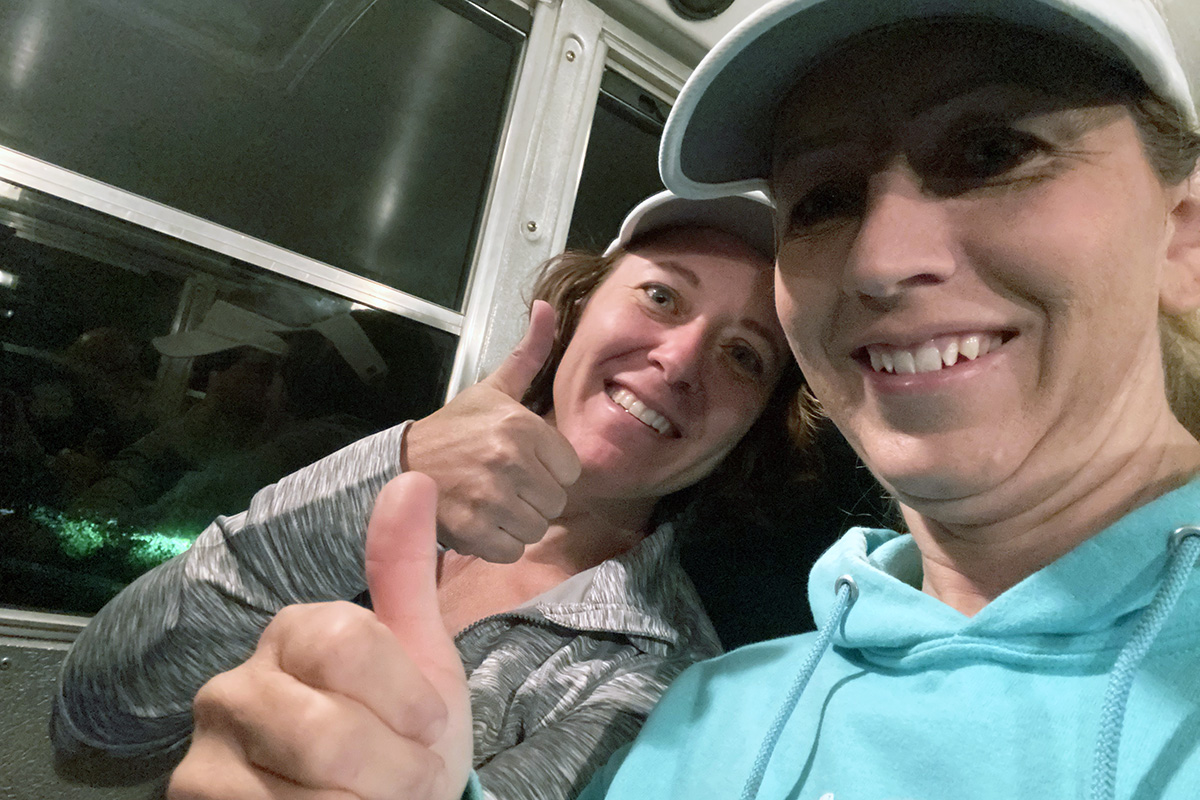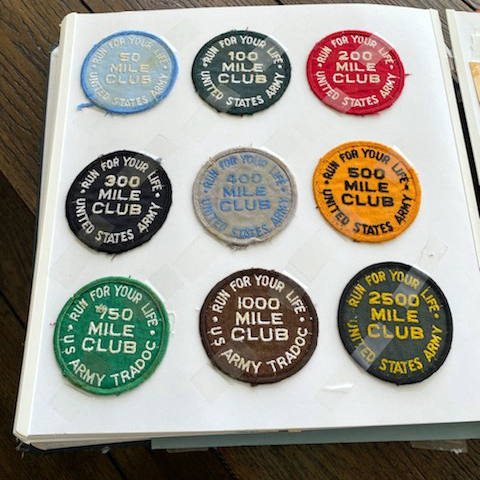You’re accessing archived content
This is archived content from the UIT website. Information may be outdated, and links may no longer function. Please contact stratcomm@it.utah.edu if you have any questions about archived content.
Sheedy rediscovers running during the pandemic

L-R: Gary Johnson, Rachael Sheedy, Sarah Bradshaw, Becca Albrecht, Ruth Carter, Esther Rigby, and Sandy Johnson.
How she turned “2 miles [that] felt like forever” into 13.1
Why is distance running so intimidating when you’re just starting out?
Rachael Sheedy said false starts tend to happen because aspiring runners don’t acknowledge that success requires more mental than physical strength. In other words, runners are made, not born.

L-R: Sisters Sarah Bradshaw and Becca Albrecht congratulate each other after finishing the Beaver Canyon marathon on August 14.
With the right equipment and realistic goals, all the excuses — I don’t have the right body type, I’m too old to start, my feet hurt, it’s boring — will quickly fade like mile markers behind you.
“Barring someone who has physical limitations, I’m 100 percent convinced if I can do it, anyone can,” said Sheedy, associate director of Product Management and Student Systems in UIT’s University Support Services, who completed her first half-marathon in Beaver, Utah, on August 14. The Beaver Canyon marathon is a Boston marathon-qualifying race.
Sheedy ran a little in high school and college, but not competitively owing to “too many nerves.”
“I just couldn’t do it. I would get too scared,” she said.
Sheedy eventually stopped altogether “with no intentions of going back,” but her attitude toward running changed after being cooped up in the house during the pandemic.
“All of a sudden, I couldn’t go socialize but desperately wanted to get out of the house,” she said. “Before COVID, I lifted weights, but I needed to find something to do outdoors or I’d lose my mind, so I decided to start running again.”

Sheedy, left, and her sister Ruth Carter, ride a shuttle bus to the starting line of the Beaver Canyon race.
She withstood some initial pain from tendonitis in her feet, but it was her head that required the most attention. Like many newcomers to running, or people returning to it after an absence, she thought to succeed, she had to run every day.
“That mentality is really laborious and self-defeating, for me anyway. I think any overly strict running routine makes it harder to push yourself. I mean, at the beginning, 2 miles felt like forever,” Sheedy said.
Hitting the pavement on a modest schedule — three days a week, then four — made it much more palatable.“It’s pretty easy until you start entering races, and relatively inexpensive to get started,” she said. “You can do it for just 10 minutes. That’s what I did. I couldn’t even run a mile at first — I had to walk part of it — which humbled me, but didn’t deter me. When you start to see a little bit of progress, it makes you motivated to keep pushing for a bit more, and it snowballs from there. It becomes a craving, and a really satisfying one at that.”
Need inspiration?
Check out these articles about getting started or back into running.
- How to start running (New York Times)
- How to start running today: a beginner's guide (Runner’s World)
Ready to run?
Here’s what’s coming up around the state, courtesy of Running in the USA:
Sheedy’s four younger sisters joined her at the Beaver Canyon event — Esther and Ruth also competed in the half (~13.1 miles); Sarah and Becca ran the full marathon (~26.2 miles) — all clad in T-shirts that read: “Sole sisters” and “If you think I’m crazy, you should meet my sister.” One particularly “crazy” sister, Becca, finished the course on a fractured shin.
The course, Sheedy said, was mostly downhill, gradually descending 4,000 feet, which initially boosted her confidence but also gave her a false sense of security. “When I started the run, I felt amazing, like I was flying,” she said. Her goal was to finish in the 10-minute mile range, which seemed well within reason, cruising along at 8.3 minutes per mile until about mile nine when the course shifted uphill.
“That’s when I started cursing,” she laughed. “I practiced on the course a few weeks in advance and I remember those hills, but I swear they added a few. Those last few miles, I kid you not, they felt like I was running in place.”
In the end, she finished at a 9.34-minute mile pace.
Sheedy’s mom, Sandy, and dad, Gary, rooted her and her sisters on. Both used to be endurance runners, having completed three and six marathons, respectively.

Sheedy's dad, Gary, earned running patches in the Reserve Officers' Training Corps (ROTC).
Her dad had a natural aptitude for sprinting in high school, Sheedy said, and took up distance running while attending Utah State University. In 1977, he completed his first marathon, the Golden Spike; his second, the Deseret News Marathon; and the inaugural St. George Marathon, originally called the Pioneer marathon. He ran the Deseret News Marathon, founded by Sheedy’s great-uncle Keith West, a few more times before calling it good, though Sheedy said he’s considering running the St. George Marathon in 2027 to mark its 50th anniversary. He’ll be 83 years old.
“I guess me and my sisters aren’t the only ones who are a little crazy about this running thing,” Sheedy said.
Node 4
Our monthly newsletter includes news from UIT and other campus/ University of Utah Health IT organizations, features about UIT employees, IT governance news, and various announcements and updates.
